Green architecture – naked Home Village
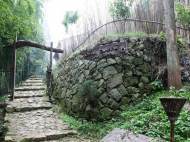 Located at Shanjiuwu, a charming little village of 18 farmhouses tucked on the southeastern side of Moganshan, the naked Retreats show great example of sustainability. Moganshan is a beautiful bamboo clad mountain situated in Deqing County, Zhejiang Province, only 60km north of Hangzhou and 200km away from Shanghai. In this article, we’re going to write about the rustic naked Home Village which lies in the peaceful setting of Moganshan.
Located at Shanjiuwu, a charming little village of 18 farmhouses tucked on the southeastern side of Moganshan, the naked Retreats show great example of sustainability. Moganshan is a beautiful bamboo clad mountain situated in Deqing County, Zhejiang Province, only 60km north of Hangzhou and 200km away from Shanghai. In this article, we’re going to write about the rustic naked Home Village which lies in the peaceful setting of Moganshan.
One day in early 2007, the founder of Naked Retreats, South African Grant Horsfield, signed up for a mountain bike expedition from Shanghai. Aside biking, Horsfield was looking for an out of the way, secluded, peaceful retreat from the city where he could establish a resort for like-minded souls.
Luckily for him, the guide of his cycling group was soon hopelessly lost at the Moganshan, where a mountain trail led his party down to Shanjiuwu village (or 395 which is pronounced as san-jiu-wu in Chinese language). Twelve of the buildings in the village now make up naked Home Village. Unlike the grandiose European style stone villas on top of the mountain, the houses found in 395 are humble traditional farmhouses constructed with thick mud walls and wood.
In the summer, naked Home Village objects rely on ceiling fans and natural cross ventilation for cooling. The room layout, doorways and windows have been designed to promote good cross ventilation. In the winter, the objects are being heated by efficient wood fire ovens. Radiators are connected by pipes to these wood fire ovens, and the heat is being transferred within a closed circuit. Heat loss is lessened by additional insulation of ceilings and walls, and double glazed windows.
Uncontaminated groundwater from the depths of the mountain is being used for drinking, bathing and cooking. Gray water reclamation and plumbing systems are used in order to reduce the consumption of precious fresh water. Aside collecting rainwater into grey water tank, gray water is composed of wash water from the kitchens, bathrooms sinks and showers/bathtubs and laundry sinks. The water recycling process uses this gray water in activities that do not require potable water such as dual-flush toilets, gardening and landscaping.
Solar hot water heaters are used to lower the water heating costs. Even in colder periods when the sun is not as strong, the solar heater will heat the water from near freezing temperatures by 10 degrees before being additionally heated in the electric hot water heater. Light fixtures are using compact fluorescent energy saving light bulbs or solar powered light fixtures in the outdoor areas.
During the construction, they preserved old farmhouses and reused most existing walls, floors and roof structures. Many of the original building materials such as wood used in doors and windows, roof tiles, bricks, and rubble used to raise site levels were recycled. Local and natural building materials were used to minimize the use of products that require considerable embodied energy for their manufacture or transportation.
The raw building materials were used as finishes in order to reduce the need for materials used as decorative architectural finishes, and low or no VOC paints were used inside objects. Second hand and old furniture from antique markets are reused, and many kitchen utensils, books, and artwork are donated by friends.
Recycling and sustainability is practiced and promoted by the staff. Glass, plastic and aluminum are recycled, while vegetable peels, coffee grind and organic waste are being used for compost. They also grow organic vegetables and herbs in the gardens, and emphasize fresh, locally available food products that minimize transportation, processing and refrigeration.

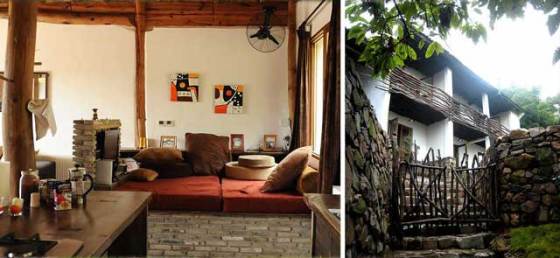
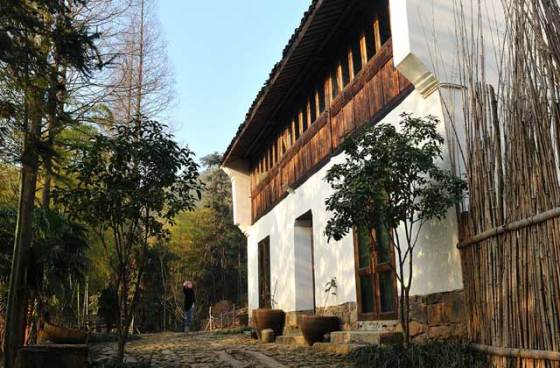
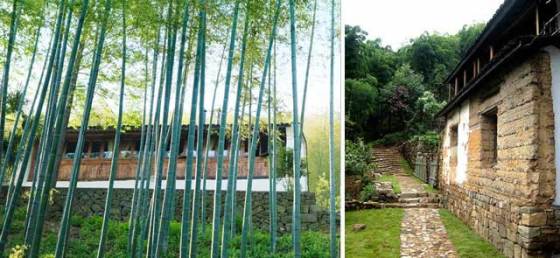
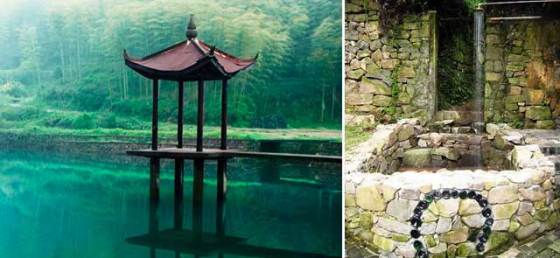








great post, we love anything that is echo friendly, thanks
It looks so peaceful, very nice find!